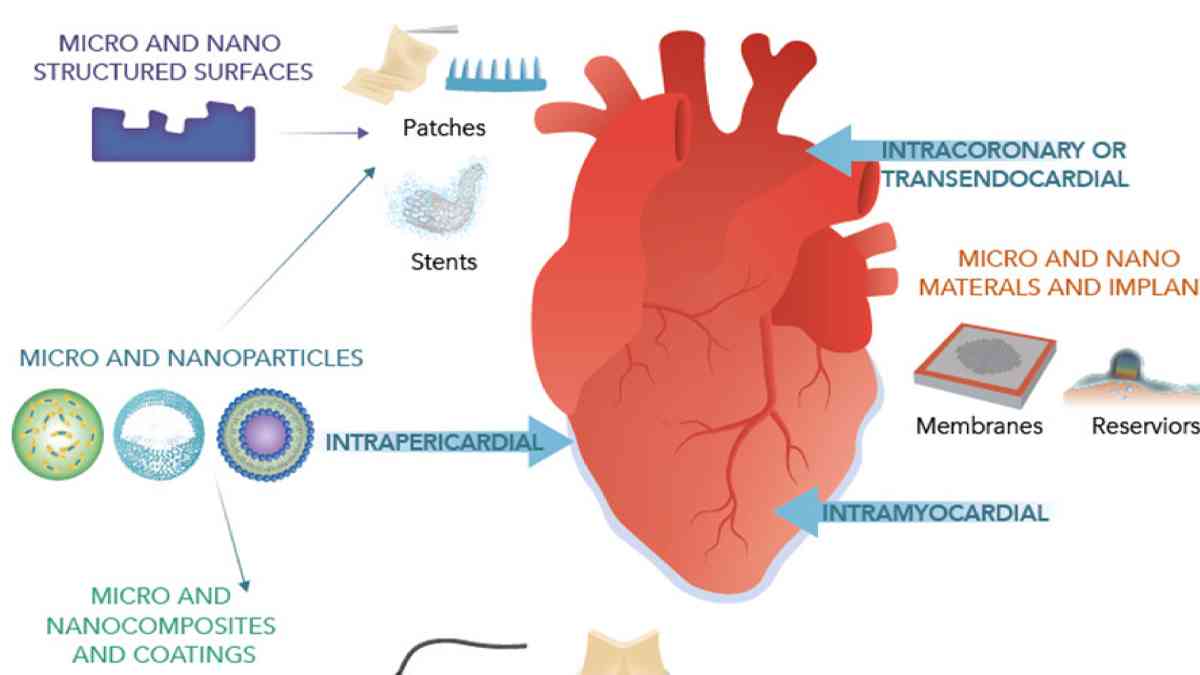In a great leap ahead in the subject of medical technology, scientists at the University of Virginia have harnessed the power of machine learning to discover potential tablets that could extensively reduce harmful scarring following a coronary heart attack or different accidents. This groundbreaking research, led by computational biologists Dr. Anders R. Nelson and Dr. Jeffrey J. Saucerman from UVA’s Department of Biomedical Engineering, has the capability to revolutionize cardiac care and drug discovery for complicated diseases.
Fibroblasts are a type of connective tissue cell observed at some point in the body, along with the coronary heart. They play an important role in tissue repair, in particular in the aftermath of a coronary heart assault. However, fibroblasts are notorious for causing harmful scarring, also called fibrosis, while their pastime will become unregulated. This fibrosis can cause stiffening of the coronary heart and impair its function, doubtlessly leading to heart failure.
Understanding how pills impact fibroblasts is pivotal in devising powerful remedies for conditions where fibrosis is a major concern. Diseases such as heart disease, metabolic disorders, and cancer are complex and tough to deal with. Machine learning offers a promising answer by lowering the complexity and figuring out the maximum vital factors contributing to the disease. This technique can also shed light on how tablets can modify diseased cells, in this case, fibroblasts.
Machine learning as a tool for drug discovery
Traditional drug discovery frequently entails a tribulation-and-blunders system that can be time-consuming and expensive. However, the studies carried out at UVA introduce a singular technique referred to as “common sense-based totally mechanistic machine gaining knowledge of.” This technique combines many years of human know-how with modern-day technology to predict the consequences of drugs on human fibroblasts.
In this study, the study crew applied their modern gadget-getting-to-know version to evaluate the results of 13 promising pills on human fibroblasts. Notably, the version not only recognized ability candidates to save you scarring but also explained how they work. This twin functionality is critical for designing effective scientific trials and know-how potential aspect results.
Pirfenidone: A Potential Game-Changer
One of the standout findings from this research is the capacity of the drug pirfenidone. Pirfenidone is already FDA-approved for idiopathic pulmonary fibrosis, a persistent lung disorder characterized by scar tissue buildup within the lungs. What makes this discovery amazing is that the version discovered a new clarification of the way pirfenidone suppresses contractile fibers and internal fibroblasts, contributing to the coronary heart’s stiffening.
Furthermore, the model also predicts the effects of an experimental Src inhibitor, WH4023, on a different sort of contractile fiber. This prediction was subsequently demonstrated with human cardiac fibroblasts, imparting additional evidence of the model’s accuracy.
Validation and Hope
While these findings are surely interesting, it’s vital to note that further studies are needed to validate the efficacy of those drugs in animal models and in human patients. However, Dr. Saucerman and his crew at UVA are positive about the transformative capacity of mechanistic gadget mastery.
Dr. Saucerman emphasizes the importance of trying out whether or not pirfenidone and WH4023 can also suppress fibroblast contraction in scars in preclinical animal models. This study demonstrates the collaborative efforts of gadget mastering and human know-how in not only coming across capacity capsules but also understanding how they work—a critical step in the direction of effective remedies for fibrosis-related situations.
How Do Drugs Impact Fibroblasts?
Drugs will have various effects on fibroblasts, depending on their particular mechanisms of movement. Here’s a concise review:
Positive Impacts:
- Growth factors: Certain tablets, like particular boom elements, can stimulate fibroblast proliferation and collagen synthesis, promoting wound healing and tissue restoration.
- Medications that inhibit the production of collagen by fibroblasts are the subject of ongoing research into the prevention of excessive fibrosis, a disorder that causes scarring and organ malfunction.
Negative Impacts:
- Cytotoxic capsules: Drugs utilized in most cancer remedies, for instance, can kill or damage fibroblasts, probably delaying wound restoration and causing other adverse effects.
- Anti-inflammatory drugs: While powerful in decreasing infection, a few anti-inflammatory pills can also inhibit fibroblast pastime and collagen synthesis, doubtlessly impairing wound restoration.
- Other pills: Depending on their mechanisms of motion, diverse pills will have unintentional effects on fibroblasts, which include altering their metabolism, migration, or gene expression.
Key Considerations:
- Drug kind, dosage, and period of publicity determine precise outcomes on fibroblasts.
- Fibroblast foundation and context play a role in their reaction to capsules.
- Pills may also have different outcomes for different human beings because of their metabolism and other elements.
Pulmonary fibrosis
Idiopathic pulmonary fibrosis (IPF) is a chronic lung disorder that causes scar tissue formation and makes respiration difficult. Idiopathic pulmonary fibrosis (IPF) influences the disease’s development and remedy despite its unclear cause.
Drugs Contributing to IPF:
- Smoking: Cigarette smoke is a properly mounted dangerous aspect for IPF, potentially due to its destructive effects on lung tissue and its potential to cause fibrosis.
- Certain Medications: Some medications, which include precise antibiotics and chemotherapy pills, were related to an accelerated chance of growing IPF in uncommon instances.
- Environmental Toxins: Exposure to occupational dust like silica, asbestos, and coal dust can increase the threat of IPF.
Drugs used to treat IPF:
- Anti-fibrotic medications: These pills, exemplified by pirfenidone and nintedanib, aim to sluggish fibrosis progression by interfering with scar tissue formation tactics.
- Corticosteroids: These capsules reduce lung infection but include potential adverse outcomes and are used cautiously in IPF.
- Oxygen therapy: As IPF advances, oxygen remedies can hold enough oxygen in the body.
- Lung transplantation: In excessive instances in which different remedies prove useless, lung transplantation may be taken into consideration.
Crucial Points:
- IPF presently has no therapy; however, medications can help control signs and slow disease progression.
- The use of any medication, even those designed for IPF, ought to be carefully monitored by healthcare experts due to their ability-based results and interactions.
- Consult a medical doctor or pulmonologist for customized advice regarding IPF and drug impact on the lungs.
- The utility of devices getting to know in drug discovery is opening up exciting possibilities inside the subject of medicine.
The research carried out by Dr. Nelson and Dr. Saucerman at the University of Virginia represents a full-size step in the direction of identifying pills that could reduce harmful scarring post-coronary heart assault. The discovery of pirfenidone’s ability to suppress fibroblast contraction gives hope to sufferers with coronary heart conditions and other fibrosis-associated diseases.
As technological know-how continues to increase, the collaborative efforts of humans and eras remain important to unlocking new treatments and improving the lives of those tormented by complicated illnesses. While challenges continue to exist and, similarly, studies are needed, the potential for device mastering to transform drug discovery and healthcare is simple.
In the quest for progressive answers to medical challenges, the fusion of human information and present-day technology promises a brighter destiny for patients worldwide.




















+ There are no comments
Add yours